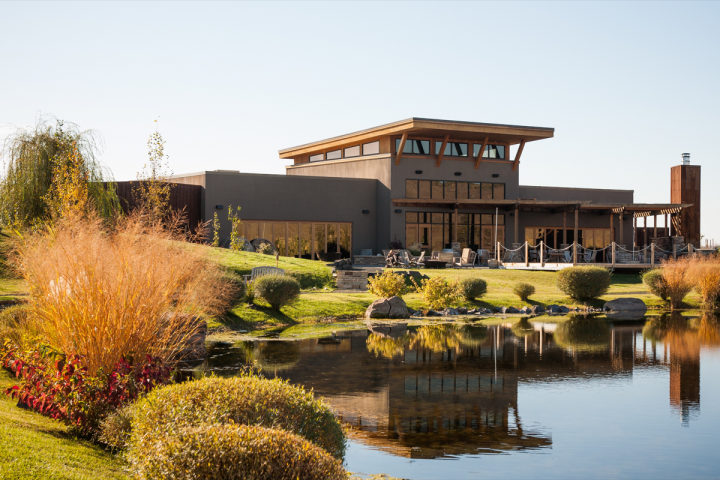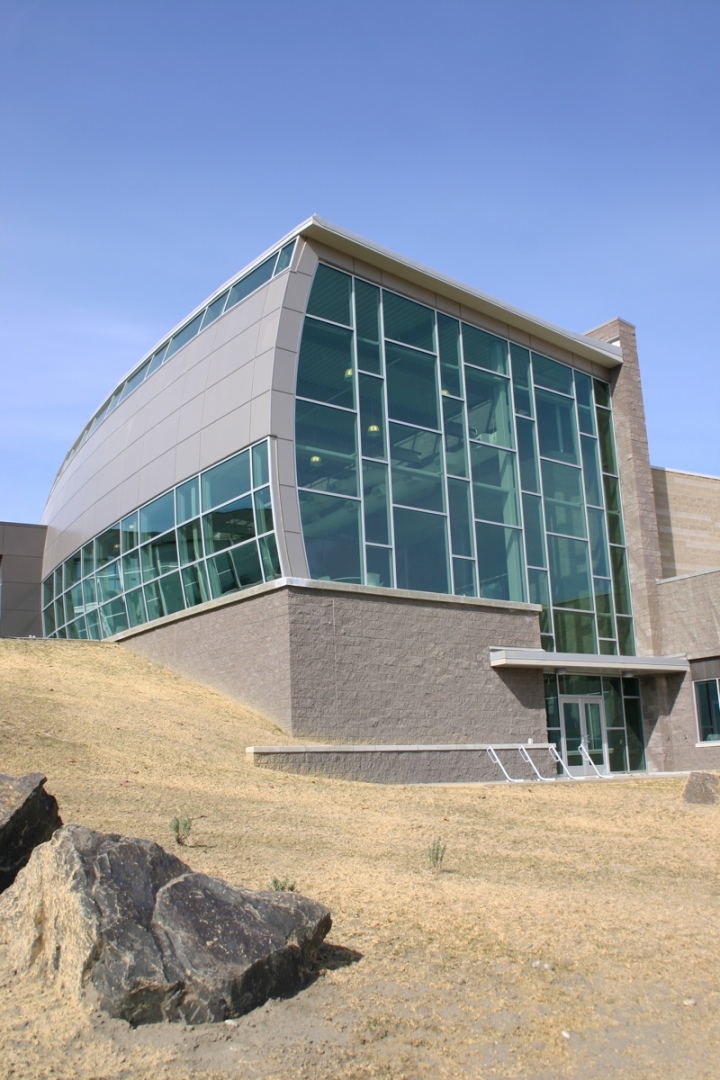
Washington produced 12.5 million nine-liter cases of wine last year, with winery revenues of roughly $1 billion and a U.S. market share of around 4 percent, according to the trade organization Washington State Wine Commission. The industry has grown fast, going from fewer than 20 wineries in 1980 to more than 850 today.
One milestone was the 1974 blind tasting of 19 Rieslings hosted by the Los Angeles Times, says Bob Betz, winemaker and founder of Betz Family Winery in Redmond, Washington. Chateau Ste. Michelle’s Riesling beat competitors from Alsace and Germany. Betz worked at Chateau Ste. Michelle at the time and remembers how that event catapulted Washington into the spotlight. For Marty Clubb, managing winemaker and co-owner of Lowden, Washington–based L’Ecole No. 41, the state’s turning point occurred later. “In 1997, there was an excess of fruit, which increased competition between the growers,” Clubb says. “The quality of the grapes and of our wines improved overnight.”
Recently, several players from outside the state have either purchased, launched or partnered with Washington wineries. Modesto, California–based E&J Gallo acquired the Columbia Winery and Covey Run brands. Italy’s Marchesi Antinori has partnered with Woodinville, Washington–based Ste. Michelle Wine Estates to create Col Solare, a Cabernet Sauvignon from the Red Mountain AVA. St. Helena, California’s Duckhorn Wine Co. released Canvasback, also a Cabernet Sauvignon from Red Mountain. Purchase, New York–based Kobrand Wine & Spirits launched Mullan Road Cellars, a Columbia Valley red blend by St. Helena winemaker Dennis Cakebread.
“Big names like Gallo and Antinori are evidence that Washington has arrived,” says Steve Warner, president of the Washington State Wine Commission. “Washington makes high-quality wine at great prices, and these larger, successful entities see the opportunity here.”
Word has spread to retailers and restaurateurs, who are now well-versed in Washington wines, says Andrew Browne, president and CEO of Seattle-based Precept Wine. “On- and off-premise accounts have bought into the category—that’s the litmus test.” Wine buyers nationwide now demand offerings from specific Washington AVAs, adds L’Ecole No. 41’s Clubb.
“Washington wines typically offer a firm acidity,” says Rich Kranzmann, vice president and general manager of the premium business unit at E&J Gallo. “The vineyards are located along the same latitudes as some of the world’s finest growing regions, including Bordeaux. The natural inherent acidity and ripe fruit flavor Washington achieves set these wines apart from those of California.” Precept’s Browne attributes Eastern Washington’s high-quality fruit to scant precipitation, cold winters, long hours of summer daylight and day-to-night temperature swings of 50 degrees.

Blend Boom
In terms of tonnage, the state’s top varietals are Riesling, Chardonnay, Cabernet Sauvignon and Merlot. Although white wine production edges out red, Washington reds draw the most attention. The state’s easy-drinking red blends are gaining traction, including Columbia Winery’s Composition ($14 a 750-ml. bottle) and Precept’s Pendulum ($18). Leading red blend 14 Hands Hot to Trot Red Blend ($10) from Ste. Michelle Wine Estates is an Impact “Hot Brand.” Sales of 14 Hands rose 20.7 percent to 1.66 million cases in 2014, following eight years of growth at over 50 percent annually.
Last year, 14 Hands owner Ste. Michelle Wine Estates opened a new winery and tasting room for the brand in Prosser, Washington. The company has 12 Washington labels, including Chateau Ste. Michelle and Columbia Crest, and shipped 6.5 million cases of Washington wine in 2014. “We’re seeing the most growth in red blends priced from $9 to $17,” Ste. Michelle president and CEO Ted Baseler notes.
Precept’s Browne says the magic price point for Washington wine is currently $15. “You can find unbelievable quality for that price,” he adds. Precept has more than 30 Washington brands, and over half of them are sold exclusively through specific retail outlets like Total Wine & More, the Potomac, Maryland–based chain that operates 115 stores in 16 states. Precept’s Washington brands include Waterbrook, the Total Wine exclusive Radius and Skyfall, an on-premise–focused label made in partnership with White Plains, New York–based Deutsch Family Wine & Spirits. Waterbrook Chardonnay is Precept’s top-selling Washington wine. The company shipped 900,000 cases of Washington wine in 2014, a 15-percent increase over 2013.

Innovative Ideas
Washington’s relatively low-priced acreage makes innovation feasible, and winemakers are more willing to take a chance on varietals outside the mainstream. Charles Smith, president of Walla Walla, Washington–based Charles Smith Wines, combines traditional winemaking with contemporary packaging. The company produces a number of brands, including K Vintners, Wines of Substance, the Chardonnay-only Sixto and Charles & Charles, a collaboration with winemaker Charles Bieler that’s marketed by Trinchero Family Estates. “Like all the world’s great grape-growing regions, Washington has a marginal climate,” Smith says. “For grape growers and winemakers willing to take it on the chin every few years, the region is perfect.” Smith’s company shipped 750,000 cases of Washington wine in 2014, and its sales have increased 25 percent to 30 percent annually for several years.
With a diverse landscape that favors many different grape types, Washington makes excellent wines from Pinot Gris, Sauvignon Blanc, Syrah and other varietals. Precept’s Browne is investing in Malbec, which has grown in popularity. Baseler of Ste. Michelle notes that since the 1980s, numerous varietals have been touted as Washington’s next big thing, but none of them have yet gained widespread acceptance. “Consumers want wines they’re comfortable with, so Washington’s main varietals won’t fade into the past,” he says.
Noel Doty, director of wine and spirits at Metropolitan Grill in Seattle, embraces the state’s diversity and stocks wines made from Washington’s lesser-known varietals. He often recommends locally made Malbec, Grenache or Cabernet Franc when guests ask for a lighter red to pair with steak. “Most restaurateurs worry that these wines won’t sell, but I want to give customers the opportunity to enjoy Washington examples of the varietals they like,” he says.
Washington wines account for 40 percent to 45 percent of the wine volume at Metropolitan Grill, but comprise a smaller percentage of dollar sales because they cost less than wines from other regions. “I tell customers you get more bang for your buck with Washington wine,” Doty says. “You can order a top-echelon Washington label for $100 to $150.” Of his list of 2,200 wines, 350 of them are from Washington, including three whites and eight reds by the glass. The two biggest-selling brands are Chateau Ste. Michelle and L’Ecole No. 41. Doty carries many allocated and rare wines from Washington, including the 2011 Leonetti Cabernet Sauvignon Reserve ($300 a 750-ml. bottle) and the 2011 Cayuse Armada Syrah ($270), both from the Walla Walla Valley. The steak house hosts about eight Washington winemaker dinners a year.
While guests at Metropolitan Grill pair adventurous Washington wines with comfort food, the clientele at Antoine’s Restaurant in New Orleans looks for familiar varietals. Wine buyer and beverage manager Matthew Ousset recommends Washington whites and reds because their acidity complements the restaurant’s rich French-Creole cuisine. He has expanded the Washington wine selection at Antoine’s and currently offers 13 Washington wines, including two by the glass. Most of them are from Chateau Ste. Michelle, Precept and Charles Smith and are priced at $25 to $45 a 750-ml. bottle. Washington wines comprise 7 percent of glass sales at Antoine’s, and the 2013 Waterbrook Chardonnay ($8.50 a glass; $30 a 750-ml. bottle) is among the restaurant’s top-selling wines. In the coming months, Ousset plans to add more Washington Cabernet Sauvignons and Bordeaux-style blends.

Research On The Rise
Washington’s tech-savvy reputation extends to its winemakers, and many of them describe the perfect clone-site marriage as their holy grail. Washington has come a long way in this area. “Forty years ago, research consisted of a couple of us standing around in the vineyard, looking at the vines,” Betz says. He and others note a stronger link between the vineyard and cellar now, exemplified by the $23 million Wine Science Center opening this month at Washington State University Tri-Cities in Richland. The center offers experimental vineyards, labs, greenhouses and winemaking facilities. Research at the center will focus on the state’s unique growing conditions.
“We have arctic blasts, so keeping our vines healthy to resist cold pressures is a huge part of what we do, and the center will address that need,” says Clubb of L’Ecole No. 41. But Washington winters also benefit the vines by forcing them to go dormant and harden off—a process that kills pests. The cold, dry climate, lean soil, lack of phylloxera and drip irrigation make sustainability within reach for most of the state’s grape growers, says Warner of the Washington State Wine Commission.
Unlike wine regions where every vineyard acre is already planted, Washington still has wide-open spaces suitable for vineyards, and it gives wine professionals a Wild West sense of possibility. “The Columbia Valley has hundreds of thousands of plantable acres, so the Washington wine industry has much room to grow,” Betz says. “We’re not anywhere near the limit, and the industry isn’t a stress on the state’s natural resources at this time.”
Ste. Michelle’s Baseler also predicts advances. “Plantings will increase—we’ll see tremendous growth in terms of both vineyards and wineries,” he says. “Washington’s elite wineries will go to the next level, where people pay top dollar for ageable Washington wines at auction.” Smith notes an abundance of opportunity in Washington—more than anywhere else in the Northern Hemisphere. “There’s so much dirt that hasn’t been turned over yet,” he says. “I don’t know what’s going to happen in Washington, but I have a front-row seat, and I’m excited to see what unfolds.”